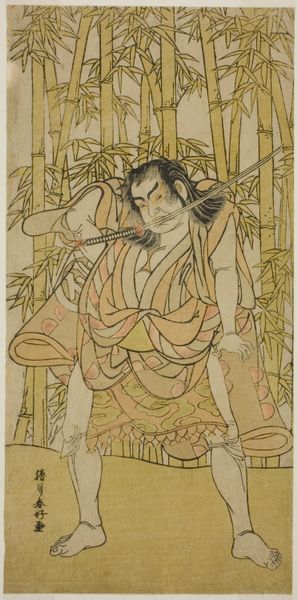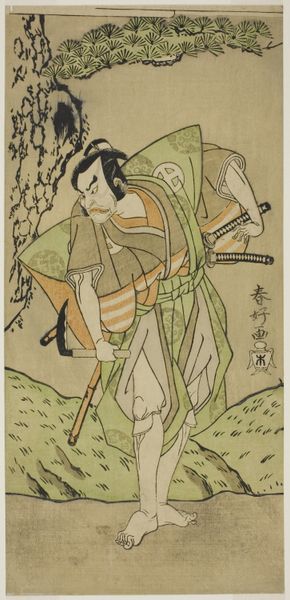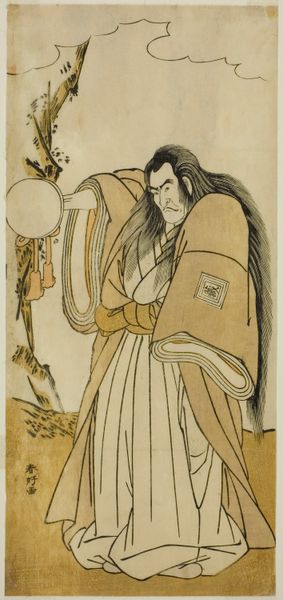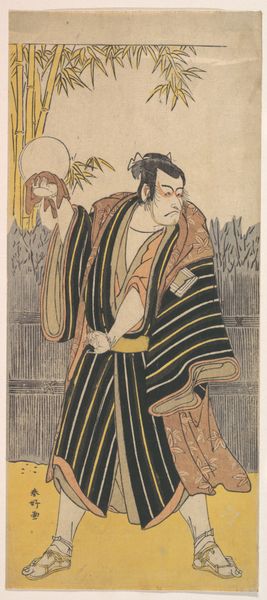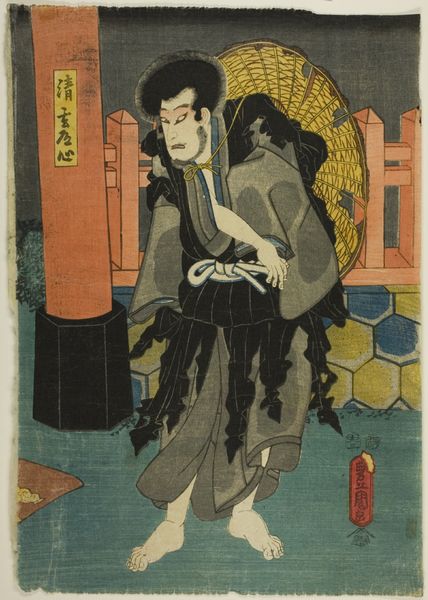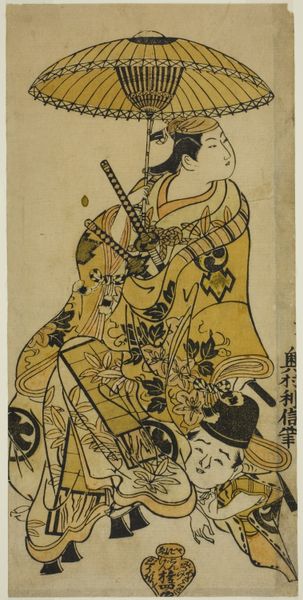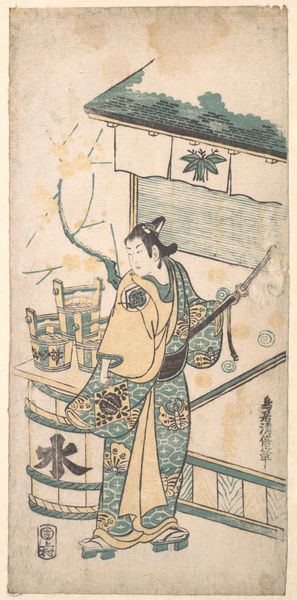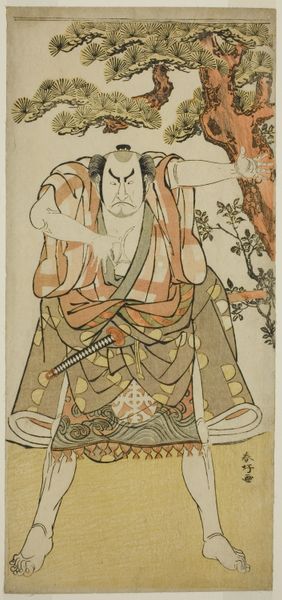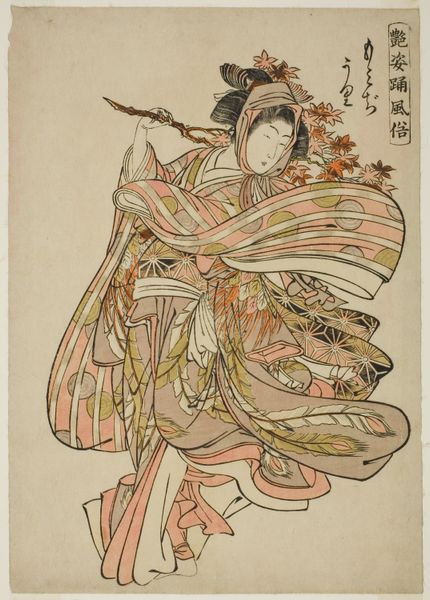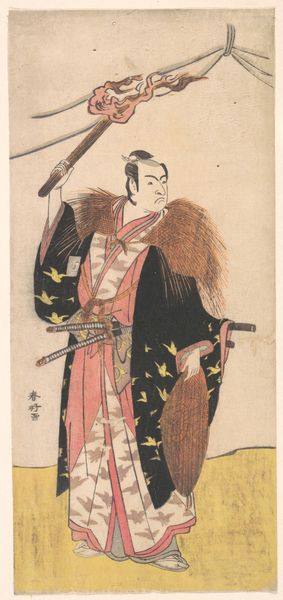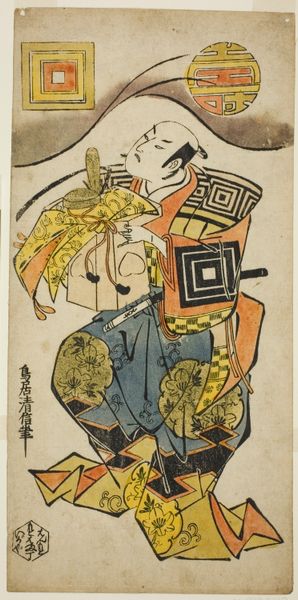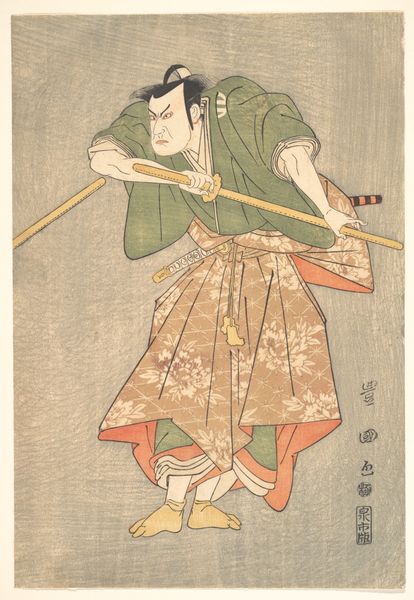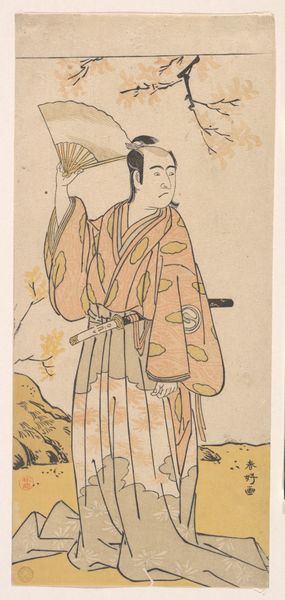
The Actor Ichikawa Monnosuke II as Hayano Kampei in the Play Kanadehon Chushin Najori no Kura, Performed at the Nakamura Theater in the Ninth Month, 1780 c. 1780
0:00
0:00
print, woodblock-print
#
portrait
# print
#
asian-art
#
ukiyo-e
#
figuration
#
woodblock-print
Dimensions: 32.8 × 15.2 cm (12 15/16 × 6 in.)
Copyright: Public Domain
Curator: Here we have a woodblock print by Katsukawa Shunko, dating back to around 1780. It depicts the actor Ichikawa Monnosuke II in the role of Hayano Kampei, from the play "Kanadehon Chushingura." It’s part of the collection at the Art Institute of Chicago. Editor: My initial feeling is of a contained desperation. There's a heavy sorrow hanging about this figure; his downturned gaze just seems to weigh the whole composition down. Curator: Indeed. Katsukawa, like many Ukiyo-e artists, masterfully captured the emotional weight of Kabuki drama. He focused on the specific details of this actor’s performance. Look at the falling rain – that element alone has a profound effect. The character, Hayano Kampei, is often seen as a tragic figure. The downward slanting lines suggest an atmosphere of oppressive inevitability, almost a lament. Editor: It does bring an inescapable visual connection to downfall, doesn't it? I wonder, what's the symbolic function of the sheaves of what appears to be hay that he’s carrying? There’s such a stark contrast between that pastoral burden and the gleaming sword in his grasp. Curator: Well, those bundles of hay suggest that he’s in disguise, trying to blend in with common laborers as he flees after a grave error. They also function as a potent visual contrast – innocence and humility juxtaposed with the samurai’s sword and its inherent violence and responsibility. The hay, as a natural material, might refer back to ideas about a fall from grace and exile to rural spaces. Editor: It's a complicated message woven there! How would you describe the audience’s role in the story, especially at this moment in history, culturally speaking? How did their expectations affect its production? Curator: Kabuki was hugely popular among the merchant class, the emerging urban population in Edo-period Japan. Prints like these, featuring famous actors in celebrated roles, catered to a kind of celebrity culture. For them, theater provided both entertainment and a space to reflect on loyalty, sacrifice, and social injustice - themes resonant to them, especially with merchants rising through social structures but limited by political constraints. The choice of role speaks to audience desires at the time. Editor: So, we are peering into not only a theatrical moment but also a crucial historical lens that reflects changing social desires and rising anxieties of that period! It is an important distinction that these art works as mirrors. Curator: Yes, precisely. Seeing the humanity in these characters from long ago certainly grants them renewed vibrancy today. Editor: Absolutely, a single performance now layered in sociohistorical nuances. Food for thought.
Comments
No comments
Be the first to comment and join the conversation on the ultimate creative platform.
